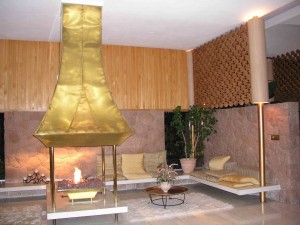Cinematic Spaces
Last week I re-watched Roman Polanski’s 1966 film Cul-de-Sac. Lionel Stander and Donald Pleasance are first-rate, but they share star billing with Lindisfarne Castle, which is the location of this one-setting film. Lindisfarne is a sixteenth-century castle that was restored and converted into a country retreat by Sir Edwin Lutyens, whose austere architecture contributes greatly to the tense atmosphere of the film. It reminded me how few movie director’s have exploited outstanding architecture. Joseph Losey set his version of Mozart’s Don Giovanni (1979) in and around Vicenza, and made full use of Palladio’s Villa Rotonda.



